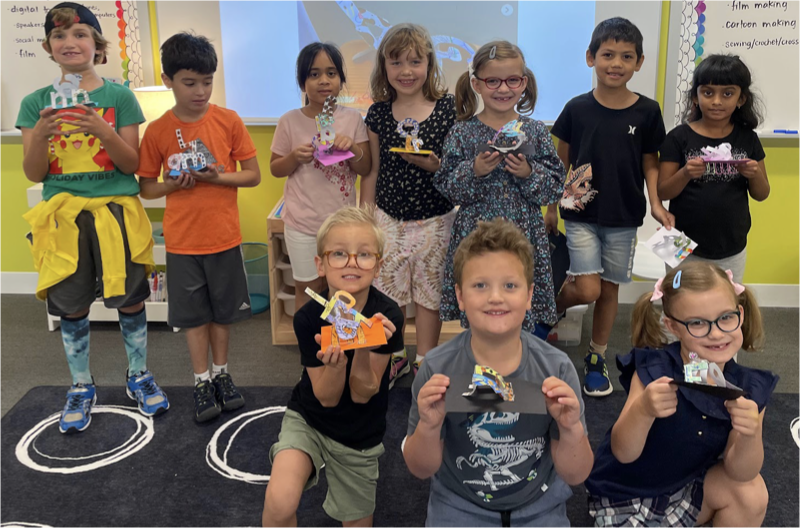

We began our first couple of sessions getting to know each other and tapping into our creativity. We started by reading a book, Rosie Revere Engineer. This book is about pursuing one's passions and learning that there will be setbacks along the way. All of those mishaps help us learn and grow. After reading this story, students were challenged to engineer their own creation of Legos that represents who they are.

The LEGO creations should be symbolic of their own interests, talents, or hobbies. The students would share their Lego creations with the class so that we all could get to know each other better.
On the second day, students took a True Colors Personality Quiz and Learning Styles Quiz which helped students learn about themselves. After taking these self-inventories, students created a 3D Name Sculpture with all of the letters in their name. They used what they learned about themselves as well as their hobbies and interests to decorate the letters in their name. We learned a lot about the students from their name sculptures.

After getting to know each other, we were introduced to special P.E.T.S. characters from Crystal Pond Woods that will help us learn in new and different ways. P.E.T.S. stands for Primary Education Thinking Skills. Dudley the Detective, Isabel the Inventor, Sybil the Scientist, Yolanda the Yarnspinner, Max the Magician, and Jordan the Judge will help us understand different kinds of thinking... like convergent analysis, divergent synthesis, visual/spatial, and evaluative thinking. We will continue to ask ourselves: What areas of thinking come easily and naturally for me? What are some areas that I can work on improving?.
We began practicing our different types of thinking with the character, Max the Magician, and visual/spatial thinking. The emphasis is on stimulating each child’s spatial intelligence by analyzing spatial relationships, reconstructing the parts into new wholes, and making predictions. Students are asked to look for patterns and find a solution that works.


We also learned to play the game, Blink. This is a fast-paced card game where students race to find matches in shape, color, or number. The student who uses up all of their cards to find matches first wins.

SET is a more difficult game that we learned to play. A SET consists of 3 cards in which each of the cards' features are the same on each card or are different on each card. All of the features must separately satisfy this rule. Click the image to try the game SET.
Katamino (Family) is a block puzzle game where two players race to fill in the puzzle with the correct blocks that fit.

The object of the game, Kanoodle is to fit all 12 puzzle pieces on the board. As the game gets harder, you start out with fewer and fewer puzzle pieces.

Puzzles, in general, are great for practicing visual-spatial thinking.



No comments:
Post a Comment